FEATURED CLEANING FRANCHISE TERRITORIES
EXCITING OPPORTUNITY AWAITS
MODERN is constantly opening exciting territory franchise opportunities across the country. Below are a few choice locations that we have identified as having huge unmet potential for a franchise location. Perhaps you'll see your ideal investment opportunity!
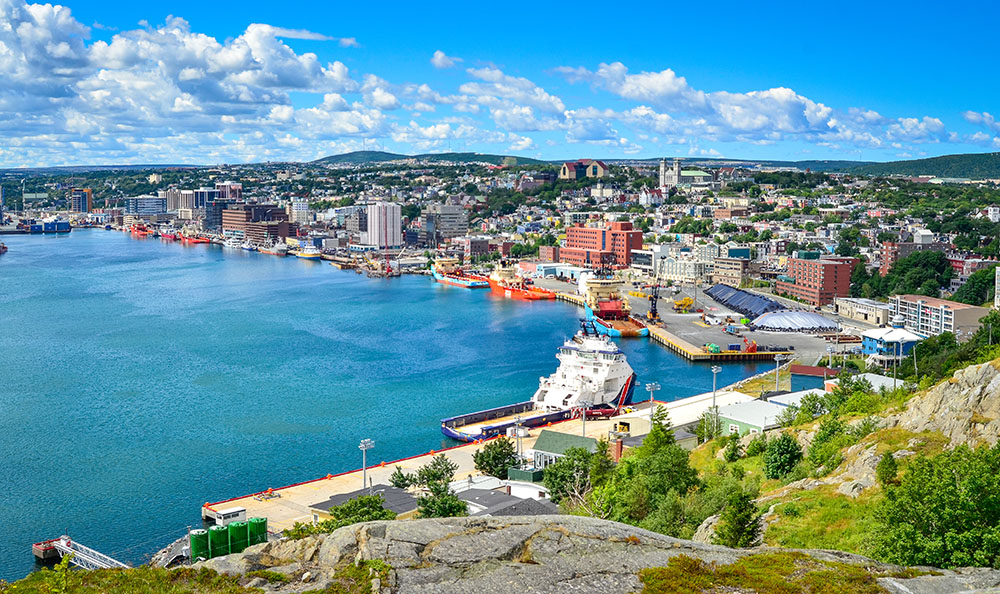
Market Profile:
The largest city and capital of Newfoundland and Labrador, with a metropolitan population of 212,579 (2021), St. John’s is also the easternmost city in North America and the main commercial, financial, educational, and cultural centre for the region. Approximately one-third of the province’s population lives in St. John’s, and its economy is fuelled by strategic sectors offering opportunities for growth and diversification, including fishing and ocean economy; energy and natural resources; aerospace; defence; technology; arts; film; and tourism. Recognized for its unique and colourful century-old urban core and vibrant arts community, the city’s suburbs, shopping complexes, and industrial sites provide all the conveniences of a progressive metropolitan locale.
Some Facts:
- Ranked the 47th largest city in Canada, the average cost of living in St. John’s is $1,790, which is rated 98th out of 153 of the most expensive cities in Canada, and 1st out of 2 in Newfoundland and Labrador.
- St. John’s is the main service centre for Newfoundland and Labrador’s offshore oil and gas industry.
- The province offers several private and government-sponsored programs dedicated to promoting regional economic development strategies, including incentives for businesses to thrive in the region.
- St. John’s is often referred to as the gateway to Iceberg Alley as during spring and early summer, massive icebergs pass by the coast of Newfoundland, offering stunning sights for locals and visitors.
- Guglielmo Marconi transmitted the first successful wireless transatlantic message to Signal Hill in St. John’s on 12 December, 1901
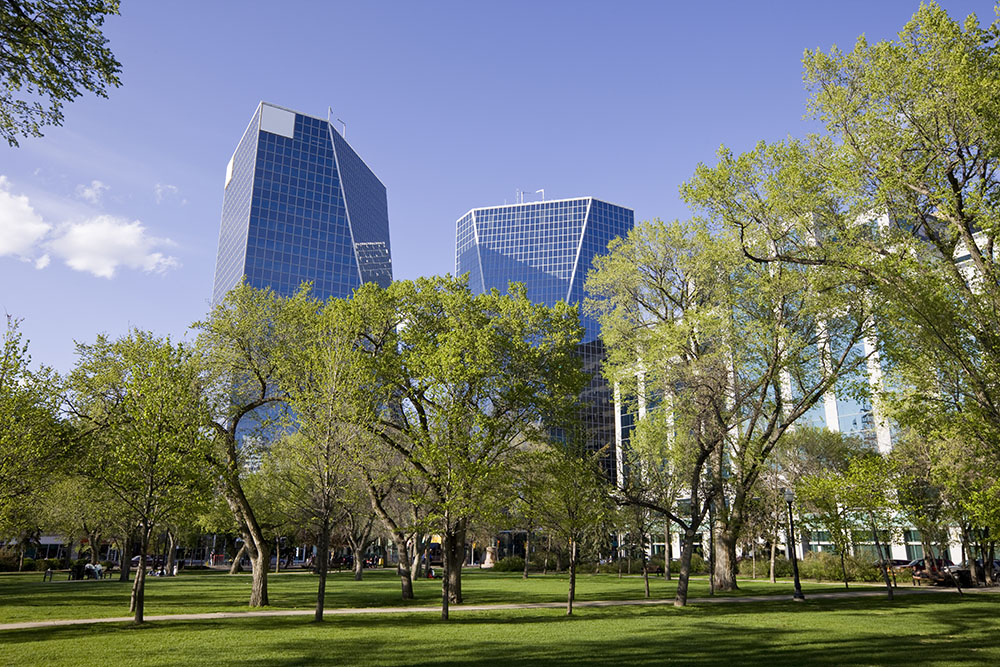
Market Profile:
As the capital of Saskatchewan, Regina is a vital hub for political, economic, and educational activity in the province. The city’s rich cultural identity—shaped by Indigenous roots and modern influences—is celebrated through a vibrant arts scene, including festivals, galleries, and performing arts. With a population of 249,217, led by individuals aged 25 to 44, the city has a dynamic, youthful, and skilled labour force, and an economy supported by key sectors such as agriculture, food processing, manufacturing, retail, and government services. Regina’s educational institutions, including the University of Regina, enhance its reputation as a centre for research and innovation, positioning it as a forward-looking, prosperous urban hub.
Some Facts:
- Ranked the 24th largest city in Canada, the average cost of living in Regina is $1,671, which is rated 115th out of 153 of the most expensive cities in Canada, and 2nd out of 4 in Saskatchewan.
- At 2,300 acres, Regina’s Wascana Centre Park is larger than Vancouver’s Stanley Park and New York City’s Central Park combined.
- The Regina Symphony Orchestra is Canada’s longest continuously operating orchestra.
- Curling is Saskatchewan’s official sport, and Regina in particular is the home of some of the greatest curlers of all time, including Sandra Schmirler, whose team won the first-ever Olympic gold medal in curling in 1998.
- For 132 years, Regina has been home to the training facility for the Royal Canadian Mounted Police (RCMP).
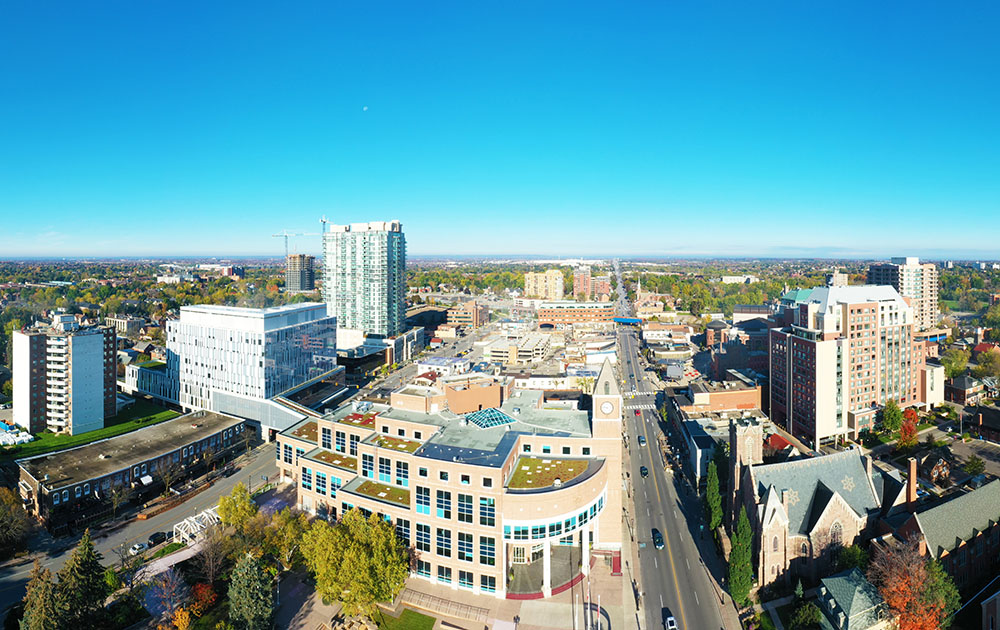
Market Profile:
Part of the Greater Toronto Area, Brampton is the third-largest city in Ontario, with nearly 800,000 residents representing over 250 cultures and 171 languages. Strategically located near major highways and Pearson International Airport, Brampton is one of Canada’s fastest-growing cities. Offering a thriving environment for business investment, it hosts more than 110,000 businesses, including international corporations and over 100 biotech firms. Brampton is a destination for corporate head offices, warehouses, industrial facilities, and factories, with key sectors in manufacturing, supply chain logistics, food and beverage, health and life sciences, and information and communication technology. Energized by innovation, collaboration, and opportunity, Brampton is attracting global talent and investment as its population expands.
Some Facts:
- Ranked the 9th largest city in Canada, the average cost of living in Brampton is $2,052, which is rated 36th out of 153 of the most expensive cities in Canada, and 17th out of 43 in Ontario.
- Recognized by Maclean’s magazine as one of Canada’s Best Communities and holding a Triple ‘A’ credit rating from S&P Global (2024), Brampton offers both economic opportunity and quality of life.
- Brampton is part of the Toronto-Waterloo Innovation Corridor, North America’s second-largest tech cluster.
- The city has over 1,283 hectares of parkland, 436 parks, and a strong focus on sustainable development.
- Once known as “The Flower Town of Canada” due to its abundance of greenhouses and strong floriculture history, Brampton continues to use “Flower City” as its slogan.
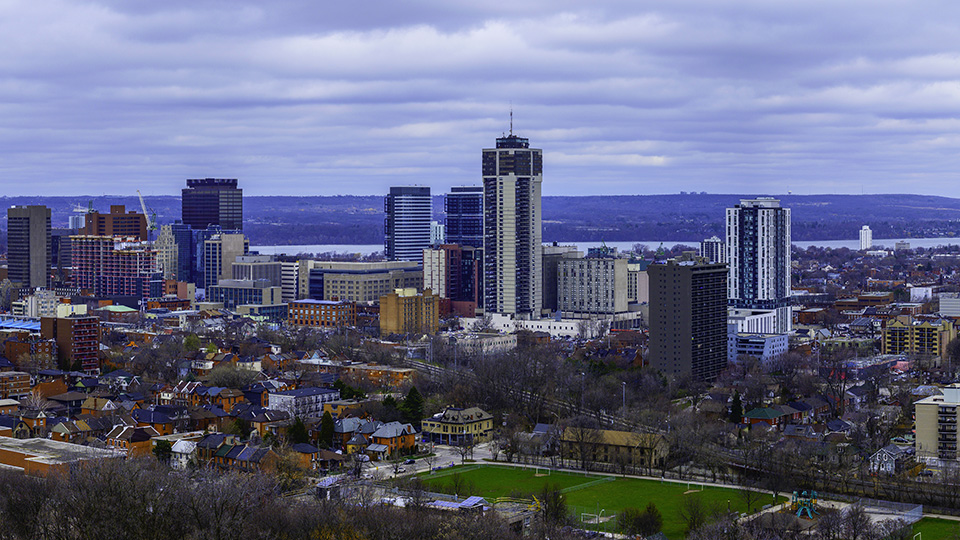
Market Profile:
Hamilton is a port city located on the most western end of Lake Ontario, 45 kilometres southwest of Toronto. With a population of 787,000 (2024), it is one of Canada’s leading industrial and steel-producing centres. Other major industries include the manufacturing of railroad equipment, turbines and automotive parts, clothing and appliances. Hamilton is a financial hub for the Golden Horseshoe region and the centre of an extensive fruit-growing district. Health care, local government, and education are also strong economic drivers. Known locally as “The Hammer” or “Steeltown” for its industrial roots, Hamilton is also renowned for its local arts, culture and culinary scenes, and home to some of Ontario’s best scenic hiking trails.
Some Facts:
- Ranked 10th largest city in Canada, the average cost of living is $2,154, which is rated 27th out of 153 of the most expensive cities in Canada, and 12th out of 43 in Ontario.
- Known as the “City of Waterfalls,” Hamilton boasts over one hundred spectacular waterfalls, such as Albion Falls, Devil’s Punchbowl, Smokey Hollow Falls, Sherman Falls and Webster’s Falls.
- The Hamilton General Hospital (HGH) is a major teaching hospital and Canada’s largest hospital by bed count. HGH is also one of the largest trauma, neurosurgery, and stroke centres in the country.
- Hamilton’s McMaster University had an enrollment of 37,592 students in 2024, and it is a member of the U15, a group of research-intensive universities in Canada.
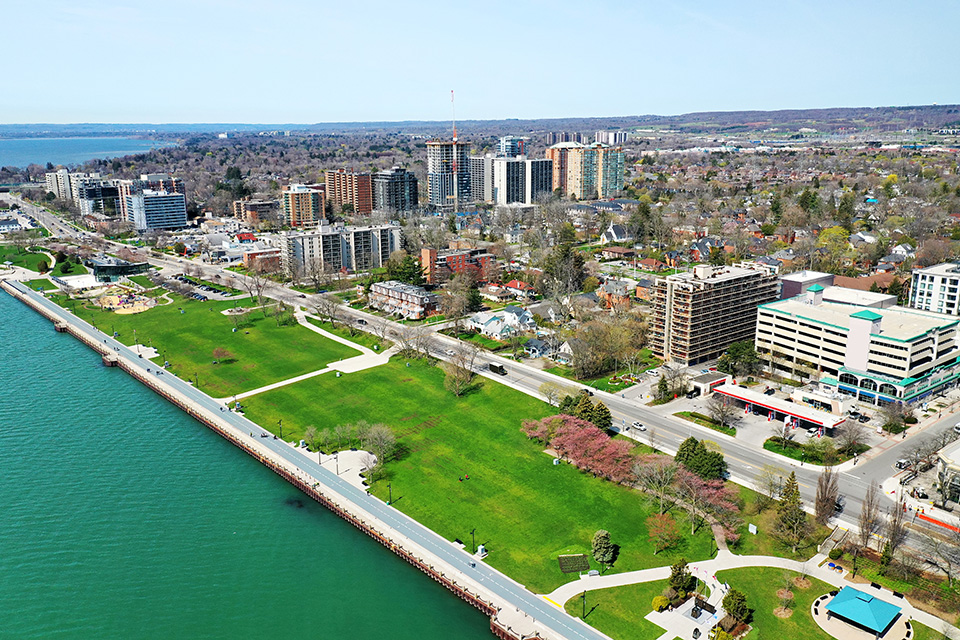
Market Profile:
Located along the far western shores of Lake Ontario, Burlington lies at the eastern edge of the Golden Horseshoe region—under an hour’s drive from Toronto and less than 30 minutes from Hamilton. A culturally diverse, vibrant and liveable city, it offers the perfect balance of urban convenience and natural beauty, with many conservation areas, hiking trails and biking destinations nearby. Positioned within Canada’s largest consumer and industrial market, the Food and Beverage sector is the main economic driver in Burlington, with over 400 businesses employing 7,800+ workers, and with 6,500 acres of farmland providing a steady supply of fresh, locally sourced ingredients.
Some Facts:
- Ranked as the 8th most liveable city in Ontario and the 28th largest in Canada, the average cost of living in Burlington is $2,185, which is rated 14th out of 153 of the most expensive cities in Canada, and 8th out of 43 in Ontario.
- Although Burlington no longer functions as an industrial port, LaSalle Park features a 215-slip marina for sailing enthusiasts.
- Officially, Burlington is part of the Greater Toronto Area, the Hamilton census metropolitan area, and the Golden Horseshoe urban region.
- Burlington is serviced by both the Hamilton International Airport and Pearson International Airport.
- The city is less than an hour’s drive from two U.S. border crossings—the Rainbow Bridge and Peace Bridge.
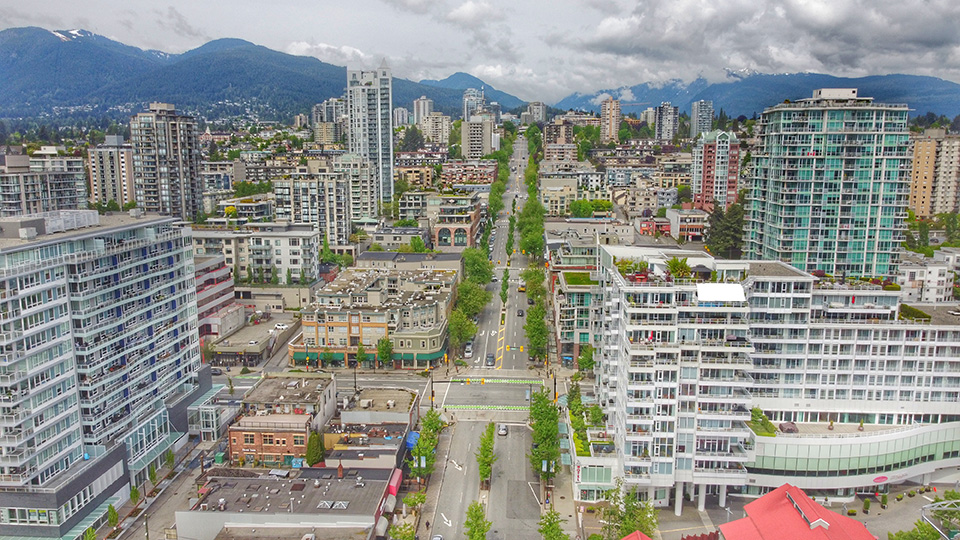
Market Profile:
One of the fastest growing and most culturally diverse communities in Canada, Surrey has a population of 682,235 (July 2024) and is the largest by area and the second most populated city in Metro Vancouver. Less than an hour’s drive southeast of Vancouver, Surrey offers an inviting blend of urban and natural experiences, featuring over 6,000 acres of green space and beaches, and 1/3 of its land area still dedicated to traditional farming. Surrey has a uniquely diversified industry base, with cutting-edge technology co-existing alongside its agricultural base. The city provides significant crops for export, plus many local manufacturing plants in this sector. Healthcare and education are also major economic drivers in Surrey, with 900 businesses related to health, plus 3 major post-secondary schools.
Some Facts:
- The 11th largest city in Canada, population studies indicate that Surrey will likely grow to be larger than Vancouver by 2030.
- The average cost of living in Surrey is $2,280, ranked 11th out of 153 of the most expensive cities in Canada, and 6th out of 22 in British Columbia. It is also rated the 6th best city to live in Canada, and 2nd most liveable city in British Columbia.
- Six highways run through Surrey, Highway 10, Highway 99, Highway 99A, Highway 15, Highway 1, and Highway 1A.
- Surrey has six town centres: North Surrey, Guildford, Fleetwood, Cloverdale, Newton, and South Surrey.
- Surrey is the location of the Peace Arch, a monument at the Canada-US border.
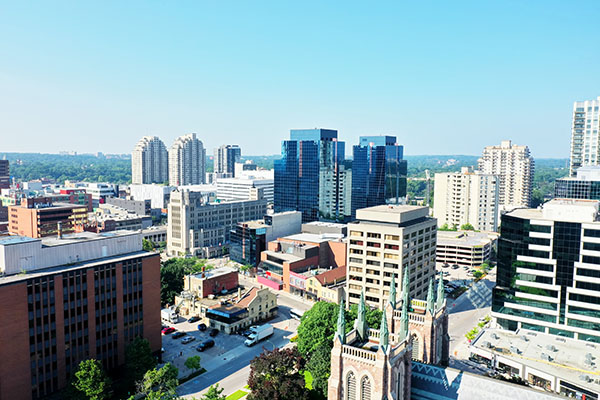
Market Profile:
With a diverse economy and a proven track record of growing businesses of all sizes, London attracts global companies, investments and talent. The city has a competitive infrastructure and is an affordable city in which to invest and grow a business, offering all the benefits of a big city but with lower costs. One of the most competitive housing markets in Canada, the average sale price for a home is $414,400 (2019 - LSTAR), and the average two-bedroom apartment monthly rental is $2,128. The city’s diverse community is home to over 530,000 people speaking 170+ different languages, including Arabic, Spanish, Mandarin, and Portuguese.
Some Facts:
- Home to several large companies that are leaders in their industry sectors.
- Within two hours of three major U.S. border crossings: Sarnia/Port Huron, Windsor/ Detroit, and Niagara/Buffalo
- Access to a supportive supply chain of 12 Original Equipment Manufacturers (OEMs)
- Access to the North American railway system through CN and CP rail
- 25 research and development institutions that can help businesses innovate and commercialize

Market Profile:
Located at a bend in the South Saskatchewan River, with many parks and nearby lakes, Saskatoon is one of the most beautiful and affordable cities to live in Canada and the largest in the province of Saskatchewan. The cultural and economic hub of the province, and the regional centre for trade and commerce, Saskatoon’s economy is diverse, with significant contributions from agriculture, mining, potash production and tourism. The world’s largest potash producer ‘Nutrien’ has its headquarters in Saskatoon, and the province’s largest university, The University of Saskatchewan, is also located here. One of the fastest-growing cities in Canada, Saskatoon is experiencing a surge in real estate infrastructure building, with many new areas under development.
Some Facts:
- Saskatoon is the 17th largest Census Metropolitan Area in Canada, with a 2021 census population of 317,480.
- According to Numbeo’s Cost of Living Index as of October 2022, Saskatoon ranks as the 5th most affordable city in Canada, with a score of 62.02.
- Well-known for its many bridges, Saskatoon has 8 bridges connecting each corner of the city and is known as Paris of the Prairies.
- Saskatchewan has one of the lowest sales tax rates in the country, and Saskatoon offers very low car insurance compared to other cities in the rest of the country.
- Saskatoon is named after the saskatoon berry, which is native to the region and is itself derived from the Cree word, misâskwatômina.
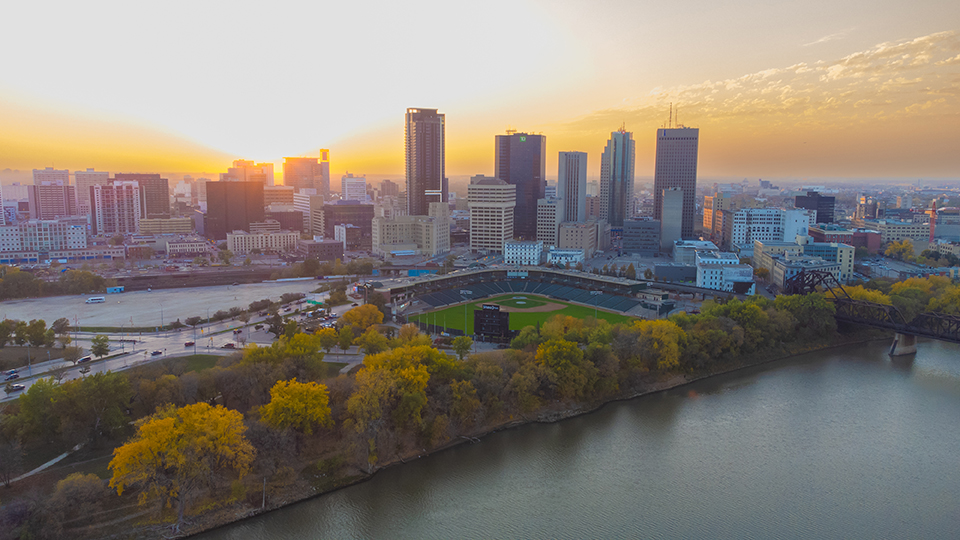
Market Profile:
Located at the geographic centre of Canada and North America and only 100 km (62 miles) from the US border, Winnipeg (population 749,607: 2021 census) is the largest city in Manitoba, and its provincial capital. The economic, transportation, and cultural hub of the region, Winnipeg is very culturally diverse, representing more than 100 languages and nationalities. Long known as one of Canada’s major industrial manufacturing centres, the city also boasts a flourishing arts scene and an abundance of green spaces that give access to many trans-seasonal outdoor activities. Key industries include: advanced manufacturing, aerospace, agribusiness, creative industries, energy & environment, financial services, information and communication technologies, life sciences, transportation & distribution.
Some Facts:
- The average cost of living for a single person in Winnipeg is $1714, which is in the top 28% of the most expensive cities in the world, ranked 2629th out of 9294 globally, 100th out of 153 in Canada, and 1st out of 2 in Manitoba. (statistics: livingcost.org)
- With its many tree-canopied neighbourhoods, Winnipeg ranks amongst the top 3 most livable cities in Canada.
- The city features more than 1,100 restaurants as well as numerous museums, theatres, sports venues and night clubs.
- Winnipeg is a four-season city, surrounded by prairie, forests, and hundreds of lakes – including Lake Winnipeg, the world’s 11th-largest freshwater lake.
- For 7 years in a row, Winnipeg has been selected by by Site Selection Magazine as one of Canada's best locations to invest, based on capital investment and related job creation, assessed on both a cumulative and per-capita basis.
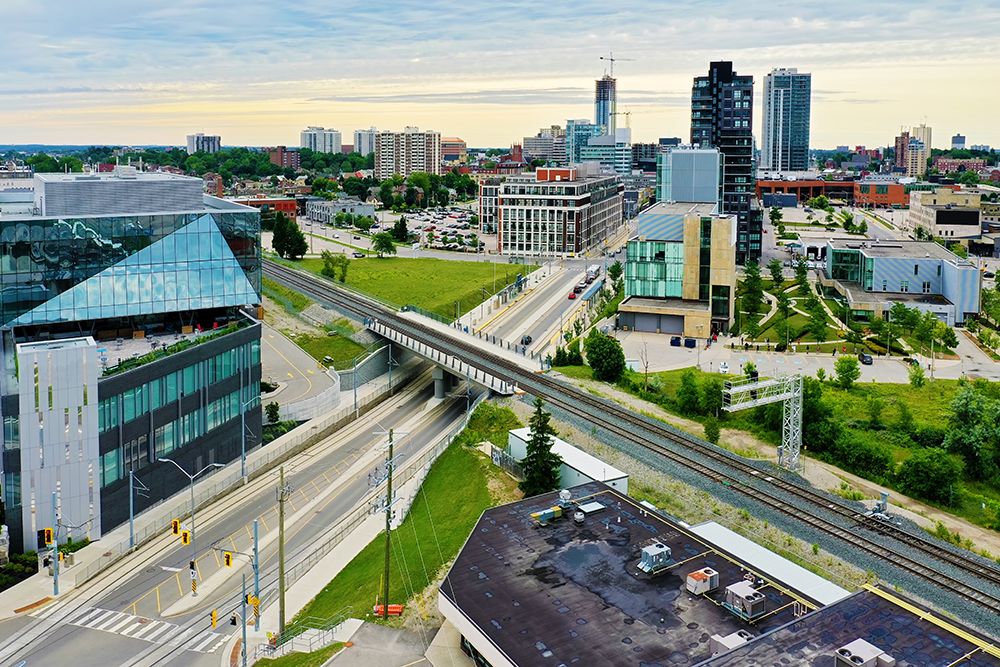
Market Profile:
Kitchener and Waterloo (also known as Kitchener Waterloo or KW) are twin cities in the Regional Municipality of Waterloo, the 10th largest census metropolitan area and the 2nd fastest growing region in Canada. With a population of 673,910 (2023 census), KW is the heart of the technology hub of Canada. With a density of start-ups second only to Silicon Valley, the region has created 30,000 tech jobs over the past 20 years. KW is home to two prestigious universities and some of the world’s leading tech companies, including Google, Shopify and Blackberry—providing other businesses in the city access to top talent and innovation opportunities. With access to these and other diverse resources and industries, Kitchener offers a very supportive environment for small businesses to thrive.
Some Facts:
- The average cost of living for a single person in Kitchener is $2084, which is in the top 17% of the most expensive cities in the world, ranked 1597th out of 9294 globally, 34th out of 153 in Canada, and 17th out of 43 in Ontario. (statistics: livingcost.org)
- Many of Kitchener’s former factories have been ‘re-imagined’ and renovated and are now home to many globally recognized innovation incubators and start-ups.
- Kitchener is accessible via a one-hour express bus from Pearson airport or from downtown Toronto via a one-and-a-half-hour drive on Highway 401.
- Home to an early German Mennonite settler population from Pennsylvania in the early 1800’s, Kitchener was known as Berlin until a 1916 referendum changed its name.
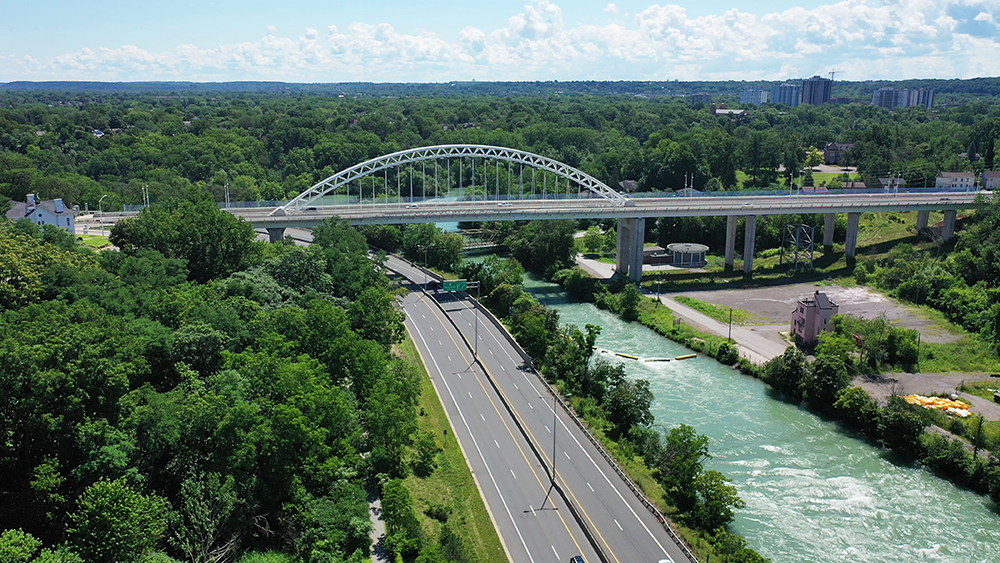
Market Profile:
St. Catharines is the largest city in Canada's Niagara Region, with a population of 136,803 (2021 census). It is easily accessible to the Greater Toronto Area (GTA) and is the only city in the region to be designated as an Urban Growth Centre by the Ontario Government, making it the focus of investment in regional services including commercial, recreational, cultural and transit infrastructure to accommodate significant population and employment growth. The continued revitalization of the downtown core also helps give St. Catharines a reputation as one of Ontario’s key digital media hubs, home to many digital and interactive media businesses, as well as to a thriving arts and culture sector.
Some Facts:
- The average cost of living in St. Catherines for a single person is $2032, which is in the top 18% of the most expensive cities in the world, ranked 1718th out of 9294 globally, and 42nd out of 153 in Canada, and 23rd out of 43 in Ontario. (statistics: livingcost.org)
- The official nickname of St. Catharines is, “The Garden City,” due to its 1,000 acres of parks, gardens and trails.
- Just 111 kilometres from Toronto and 19 kilometres from the United States border, the major urban centres located within a 160-kilometre radius of St. Catharines contain approximately 10 million people.
- The city comes alive each September with the Grape and Wine Festival, celebrating the region’s grape-growing heritage (including the famous Niagara Icewine), with wine tastings, live music, and street parades.
- The Welland Canal, a key waterway connecting Lake Ontario and Lake Erie, runs through St. Catharines and attracts visitors eager to witness the impressive locks and ships in transit.
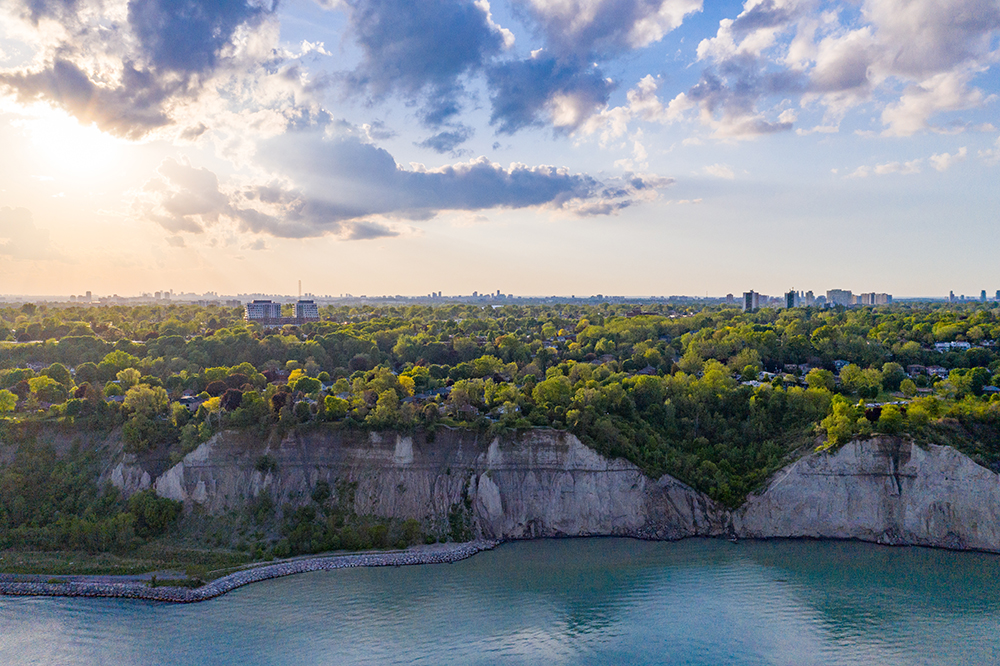
Market Profile:
Scarborough is one of the most diverse and multicultural areas in the Greater Toronto Area (GTA), with a population of 629,941 (2021 census). Situated atop the Scarborough Bluffs in the eastern part of the city, it is a popular destination for new immigrants to Canada, with a vibrant concentration of Chinese businesses and restaurants and a large number of retirement communities. The majority of the district's population is between 25 and 64 years old. A major extension of subway service to 3 additional stations is currently underway, which will provide seamless transit for those heading into and out of the downtown GTA core and within Scarborough—providing small businesses with further access to major Toronto markets.
Some Facts:
- The cost of living in Scarborough Village is 10% lower than the Toronto average and equal to the national average, and the cost of housing is 22% lower than the national average.
- The University of Toronto has had a campus in Scarborough since 1964.
- The Scarborough Town Centre is the fifth-largest shopping mall in Canada and a significant attraction in the area, as is the world-famous Toronto Zoo, which was moved from its original downtown location to its current location in 1974.
- Scarborough was incorporated as a township in 1850 and as a city in 1983, but in 1998, it was amalgamated with six other municipalities to form a single municipality a part of the City of Toronto.
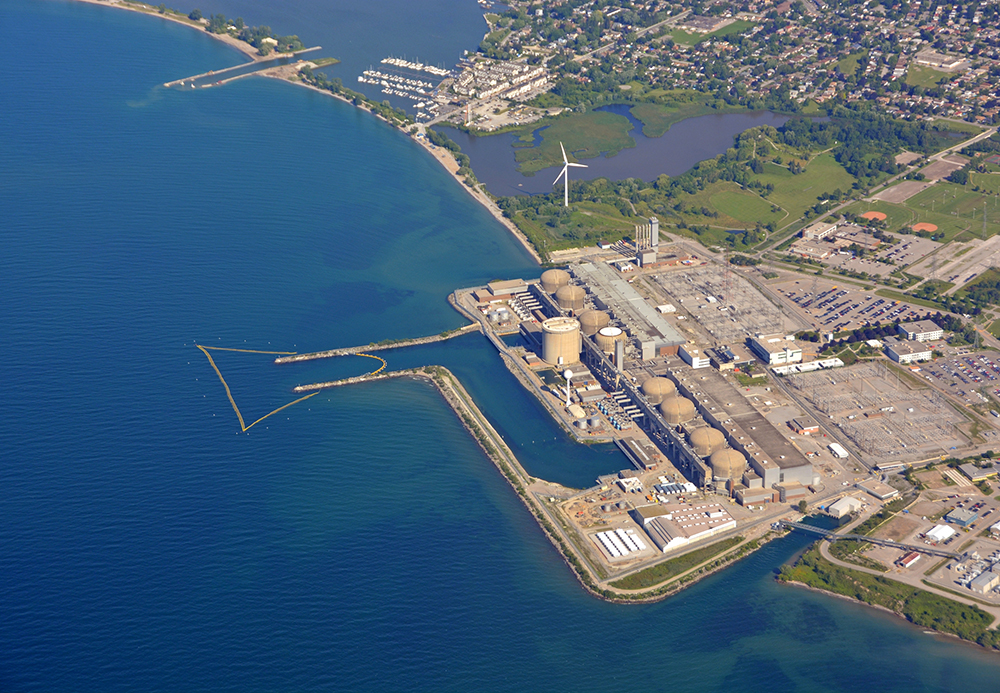
Market Profile:
Both the city of Pickering (population 99,186: 2021 census) and the town of Ajax (population 126,666: 2021 census) border the waterfront of Lake Ontario in the Durham Region of the eastern Greater Toronto Area (GTA). With significant infrastructure development in the downtown core and exciting opportunities for growth in the northern areas of the city, Pickering is an established hub of business and culture, with small-town charm. Ajax has one of the fastest-growing populations in Ontario and is one of the most liveable and eco-focused areas in the GTA. Alongside a booming economy and affordable living, it is also a safe community—with a 34% lower crime rate compared to the national average.
Some Facts:
- The average cost of living for a single person in Ajax is $2578, which is in the top 6% of the most expensive cities in the world, ranked 567th out of 9294 globally, 5th out of 153 in Canada, and 3rd out of 43 in Ontario. (statistics: livingcost.org)
- Development is well underway in Pickering for the Seaton Community, as one of the largest combined residential, employment and commercial developments in Canadian history.
- In 2021, federal, provincial and regional municipality governments jointly invested over $114.5 million towards construction of dedicated Bus Rapid Transit (BRT) infrastructure in Pickering.
- Pickering is surrounded by 200+ hectares of groomed parkland, hiking trails and conservation areas, and parts of the Great Lakes Waterfront Trail pass through both cities, offering beautiful scenic views of Lake Ontario.
- Ajax is home to Ajax Downs, one of the first Quarter Horse racetracks in Canada, established in 1969.
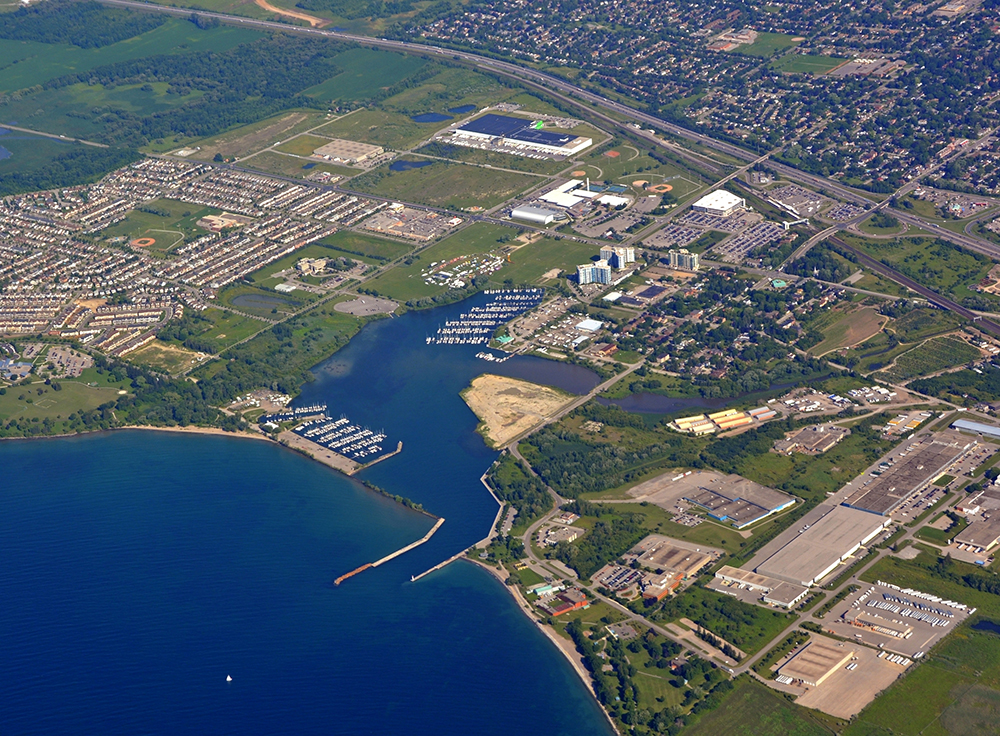
Market Profile:
The neighbouring communities of Whitby and Oshawa are located on the north shore of Lake Ontario just under an hour's drive east of Toronto and are both known as commuter suburbs of the Greater Toronto Area (GTA). As the largest city in the Durham region, Oshawa’s population is 176,000; Whitby’s is 138,501 (2021 census). Oshawa has a long, proud history as the centre for automobile manufacturing in Canada, but its more recent expansion of post-secondary education now makes it home to several esteemed universities and colleges. Together with such close proximity to Toronto and improved transportation links, both cities are experiencing significant economic growth in recent years, attracting new industries and creating job opportunities for its residents.
Some Facts:
- The average cost of living for a single person in Oshawa is $1598, which is in the top 33% of the most expensive cities in the world, ranked 3076th out of 9294 globally, 117th out of 153 in Canada, and 39th out of 43 in Ontario. (statistics: livingcost.org)
- Oshawa and Whitby are known for their thriving arts and culture scenes, with numerous art galleries, theaters, live music and other cultural events throughout the year.
- Oshawa has over 130 parks, providing residents and visitors with ample green spaces, walking trails, and recreational activities.
- Oshawa and Whitby were amalgamated in 1968 to form the current municipality.
- During the Second World War, Whitby was the location of Camp X, a secret spy training facility established by Sir William Stephenson, the “Man Called Intrepid.”
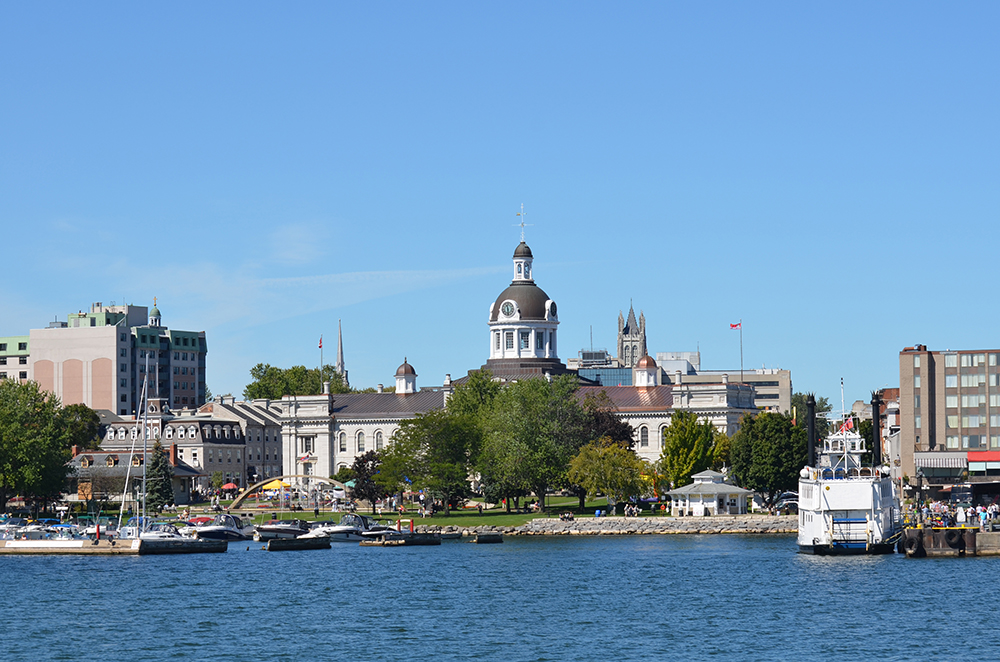
Market Profile:
The historic city of Kingston is located on the northeastern end of Lake Ontario, where the St. Lawrence River, Rideau Canal and the lake waters meet. As one of the oldest cities in Canada and at one time it’s capital (1841-44), Kingston boasts dozens of museums and historic sites. It is also a regional centre of education and health care, and home to a major university, a large vocational college, and three major hospitals. The top industry sectors in Kingston are chemical and clean technology; electric vehicle and battery technology; food processing; health innovation and manufacturing. With a very active live music, arts and culture scene, Kingston also offers a rich variety of year-round cultural events and festivals.
Some Facts:
- The average cost of living for a single person in Kingston is $1412, which is close to the world's average cost of living, ranked 3758th out of 9294 globally, 143rd out of 153 in Canada, and 42nd out of 43 in Ontario. (statistics: livingcost.org)
- With a long history of chemical research and technology Kingston has, per capita, one of the highest densities of chemical process experts in the country, which is a draw to many start-up businesses wanting to benefit from existing assets.
- Kingston is the first Canadian city to adopt a protocol for sustainable energy procurement, and the first city in Ontario to declare a climate emergency.
- The city’s lakeshore location has earned it a reputation for some of the best freshwater sailing in the world.
- Kingston is home to the world-renowned 1000 Islands, and UNESCO-designated Rideau Canal and Fort Henry.

Market Profile:
With its high quality of life, proximity to beautiful nature destinations, and low cost of doing business, Fredericton is an attractive destination for workers, businesses and investors alike. Although a small city, it offers all the advantages of ‘big city’ life but with average commute times of 5 or 10 minutes and lower real estate prices than most other Canadian urban centres. Nicknamed the “Start-up Capital of Canada”, Fredericton attracts entrepreneurs, skilled professionals, international students, and people who value a cleaner, greener lifestyle.
Some Facts:
- Home to four universities, Fredericton has excellent education and research facilities.
- While government services make up a large percentage of Fredericton jobs, Information and Communications Technology (ICT), business and research are key drivers of the economy.
- The population of Fredericton (2021 census) is 63,115 and includes a rich diversity of Chinese, South Asian, Arab, Korean, Southeast Asian, and West Asian communities.
- Oromocto, just outside of Fredericton, is home to Canadian Forces Base Gagetown, Canada’s second-largest military base.
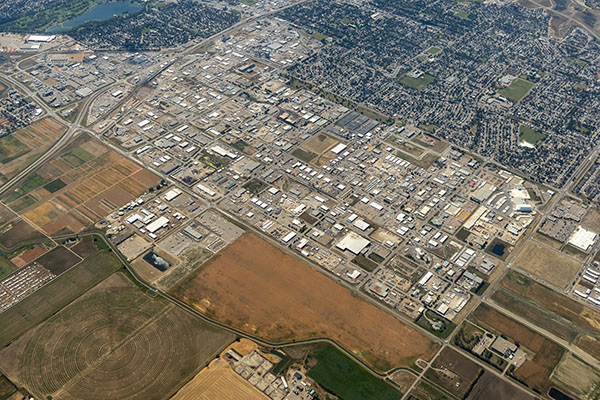
Market Profile:
With a population of over 104,000, Lethbridge is the third largest city in Alberta and a centre of innovation for business, commerce and education in southern Alberta. The city has over 3,490 businesses within a diverse community including small businesses and global corporations. There is significant growth among information and cultural industries, linked to the presence of two post-secondary institutions and the emergence of Lethbridge as a significant high-tech presence in Alberta. The city is also the hub of the agricultural sector of Southern Alberta, a long-term mainstay of the region’s economy.
Some Facts:
- No business, payroll or machinery tax; available serviced industrial land ready for construction; office space at less than $16 per square foot.
- Average home prices in Lethbridge are among the lowest of all major cities in Alberta.
- In 2022, the number of businesses in Lethbridge increased 0.95% from the previous year. The arts, entertainment and recreation segment had the largest increase.
- Lethbridge has more than 70 parks, 200 km of walking and running trails, playgrounds and sports fields.
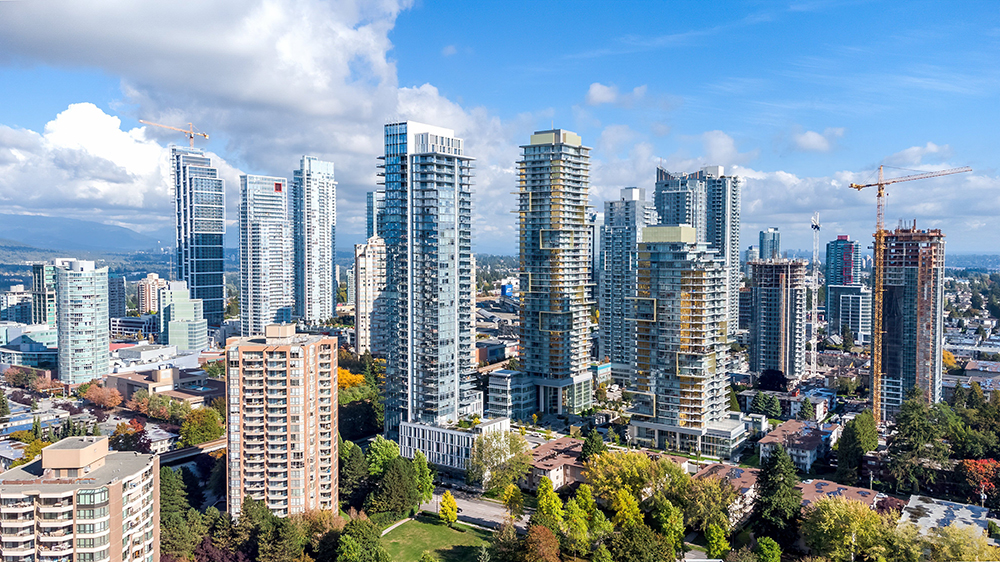
Market Profile:
As one of the 21 municipalities of Metro Vancouver, Burnaby is the third-largest city in British Columbia, after Vancouver and Surrey. With a higher cost of living than many other urban centres of similar size in Canada, its population of over 249,000 is projected to grow to 345,000 by 2041. Well-connected by rapid transit to downtown Vancouver, Burnaby is known for its shopping centres, restaurants, family-friendly communities and an excellent public transit system. One of the few Canadian cities without a majority ethnic group, residents speak over 120 languages and over half of those who live here were not born in Canada.
Some Facts:
- Burnaby is home to 16 high-amenity business centres, located in industrial areas across the city and serving a range of industries including several major high-tech companies.
- The main campuses of Simon Fraser University and the British Columbia Institute of Technology are in Burnaby.
- Burnaby’s Metropolis at Metrotown is BC's largest and Canada's fifth-largest shopping centre.
- Nicknamed, “Hollywood North,” Canada's largest film and television production studio and more than 60% of BC's sound stages are located in Burnaby.
- Under BC’s Asia Pacific Initiative, to help BC become recognized as North America’s capital for Asia Pacific commerce and culture, Burnaby has friendship city agreements with seven cities in China and one in Taiwan.
- 25% of Burnaby's land is designated as parks and open spaces, one of the highest in North America.
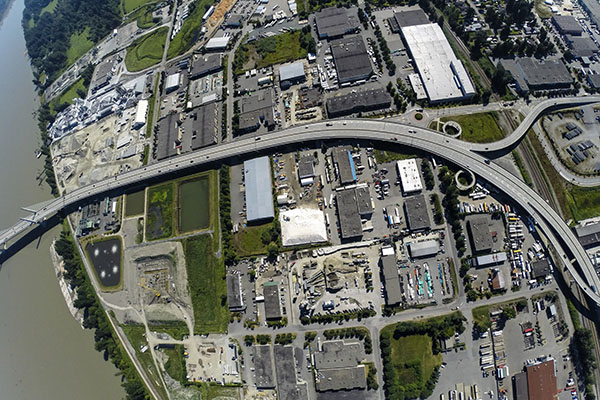
Market Profile:
About an hour’s drive southeast from Vancouver, Langley will soon be connected (anticipated in-service date of 2028) to Vancouver and adjacent communities via a new fixed rail rapid transit line. The anticipation of the new SkyTrain is a catalyst for downtown revitalization. Over the past several years, the City has strategically acquired properties to create a civic precinct and an entertainment district as per their Visioning Plan. During the past four decades, the Township of Langley experienced a dramatic increase in population, reaching an estimated 142,000 in 2022, with 7,000 registered businesses, including over 150 new businesses opening 2022 alone.
Some Facts:
- In 2022, the Township ranked an impressive #4 out of 50 communities in BCBusiness Magazine’s list of BC’s Most Resilient Cities.
- The number of Langley Township households that earn over $80,000 per year is 13 per cent higher than the Canadian average.
- In 2020, BCBusiness Magazine ranked the Township #3 out of 46 municipalities and #1 in the Lower Mainland on their list of Best Cities for Work in BC.
- In 2022, the total value of permits was over $151 million for commercial development and over $20 million for industrial development (Building Statistic – Dec 2022).
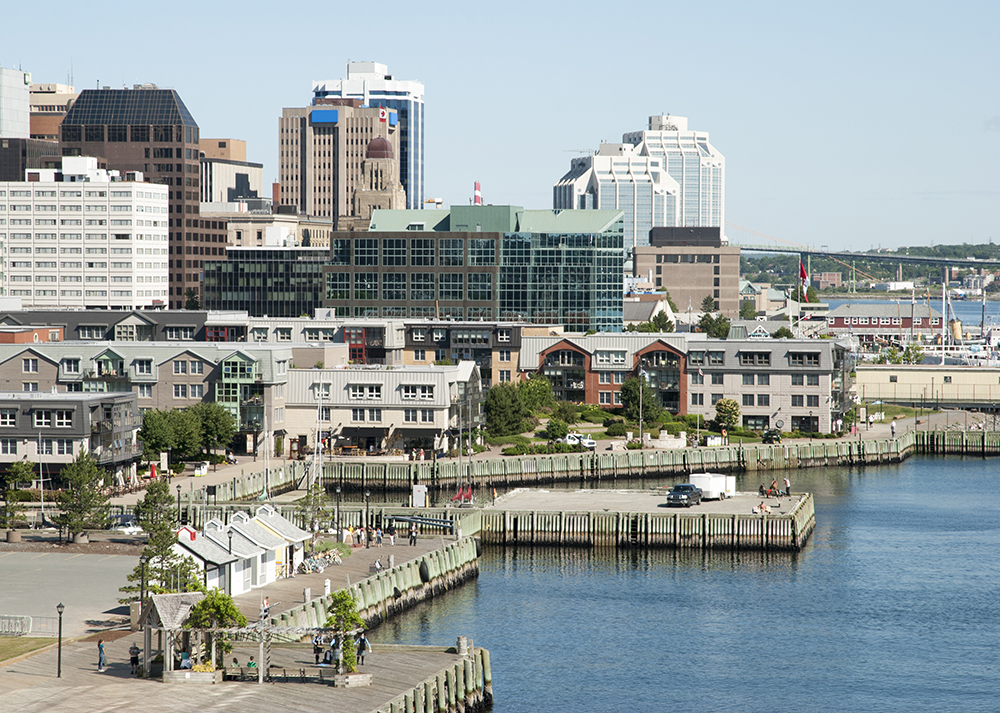
Market Profile:
As the capital of Nova Scotia, Halifax is also the largest municipality and the economic centre of Atlantic Canada. With a population of over 480,580, the city is home to a concentration of government offices and private companies, providing a dynamic business community that is well connected to the United States and internationally through its diverse transportation networks. With stunning scenery and over 7,000 kilometres of coastline, Nova Scotia also offers one of the most affordable housing and rental markets in the country.
Some Facts:
- Consistent population growth, with annual population increases of 1%
- Halifax is the eastern terminus for the CN Railway domestic and international service through Eastern Canada and the Northeastern United States.
- In 2023, the average price of a house in Halifax was $528,200, compared to $1,079,236 in Toronto, and $1,196,500 in Vancouver.
- Monthly living costs without rent or mortgage for a family of four is $5,029.50, compared to $5,569.30 in Toronto, and $5,766.50 in Vancouver.

Market Profile:
As a seaport city with a population of 69,895 and more than 131,000 in the metropolitan area (2021 census), Saint John is the second-largest city in New Brunswick. It promotes focussed programs to attract immigration and is competitive in future-focused sectors, including health research; logistics and manufacturing; and IT and cybersecurity. It also has an energy sector that includes nuclear, natural gas, oil & gas, hydro-electric, wind, and possibly tidal energy in the future. The city’s strategic proximity to New York, Boston and other US and European markets, plus its affordable real estate and beautiful natural surroundings, make St. John a very attractive destination for new talent and growing investment.
Some Facts:
- A transportation gateway to Canada and the U.S. Eastern Seaboard, the seaport is Canada's third largest by tonnage with a cargo base that includes dry and liquid bulk, break bulk, containers, and cruise.
- Canada's oldest incorporated city, established by royal charter on May 18, 1785, during the reign of George III.
- In 2022 City Council adopted the Succeed and Stay Immigration Strategy which aims to attract 12,000 newcomers to the city over the next 10 years in addition to the regional goal, which aims to grow the population by an additional 25,000.
- Three of the largest IT firms in Atlantic Canada and the head offices of many large multinational corporations are located in Saint John.
- At the Reversing Falls, the world-famous tides of the Bay of Fundy force the water at the mouth of the river to reverse its flow.
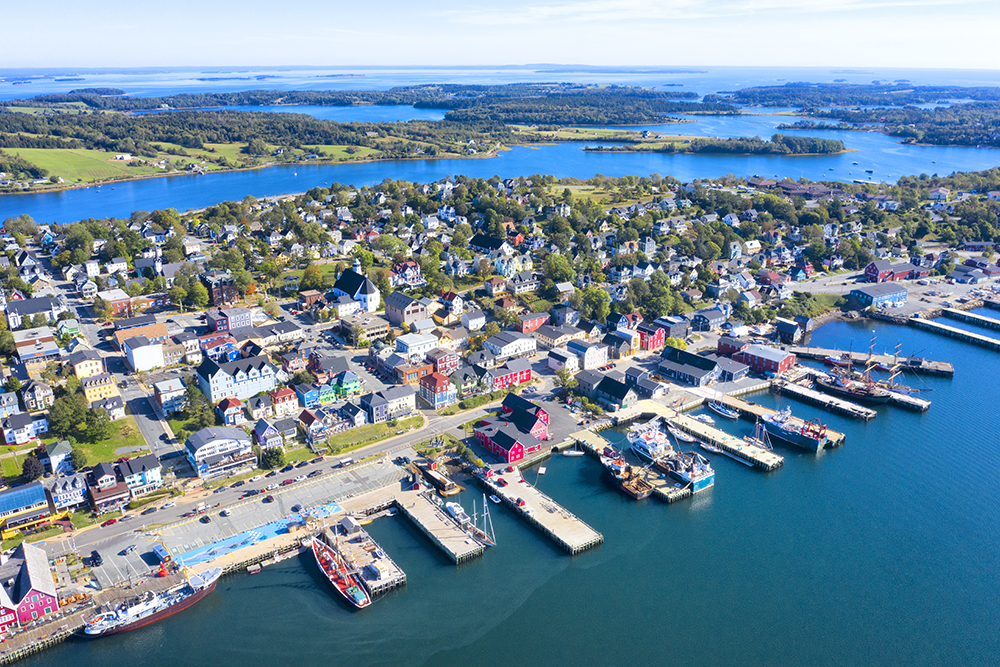
Market Profile:
Located in one of the most beautiful places in the world, scenic Cape Breton is home to a vibrant and diverse business community with more than 8,400 businesses. With a pro-business environment including access to research and development, tax incentives and financing, Cape Breton is an ideal location for investment. Five major institutional expansion projects, newly completed or still underway in the region, will soon significantly increase employment and collateral business opportunities throughout the province. These include the $700 million Cape Breton Regional Hospital expansion (expected completion by 2028).
Some Facts:
- On February 22, 2024, the federal government announced $13.3 million in funding to fast-track construction of 367 housing units in the region over the next three years, and to help spur construction of 3,200 homes over the next 10 years.
- A haven for nature enthusiasts, Cape Breton offers stunning scenery and an array of outdoor activities, including hiking, fishing, swimming, and camping.
- Cape Breton Island crime rate ranks 31 per cent lower than the national average.
- The island is home to Cape Breton University, with over 5,500 students including many international students.
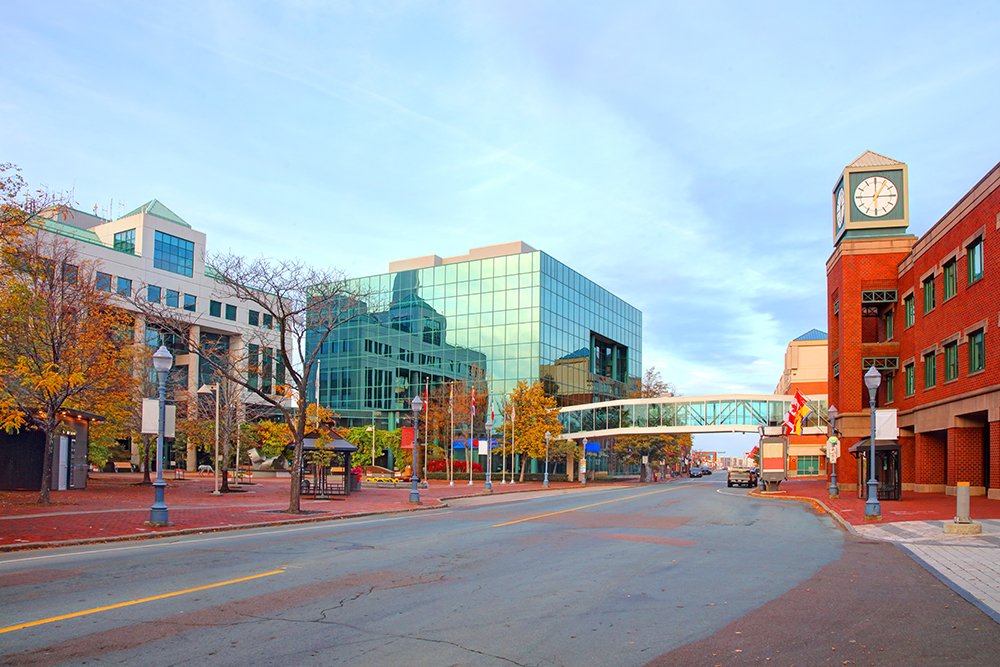
Market Profile:
Moncton’s bilingual and diverse workforce, growing economy and central location in the Atlantic region make it one of the best places in Canada to do business and one of its fastest growing communities. With some of the lowest real estate prices in the country, Greater Moncton offers a culturally rich and family-friendly setting with all the amenities of a larger city. As the only province in Canada to register a net population decrease in the last census, New Brunswick is looking to attract more immigrants to maintain a labour force to meet its growing economic needs.
Some Facts:
- In 2023, more than $36 million was allocated to expand and upgrade the city’s downtown infrastructure and prepare for private sector development.
- Average commute time of 12 minutes
- Warm water beaches & sailing 20 minutes from Moncton
- Low crime rate; one of the safest large communities in Atlantic Canada
- While tourism is a key sector to the region’s growth, transportation of goods is also a top industry, generating more than 1 billion dollars to the region GDP.
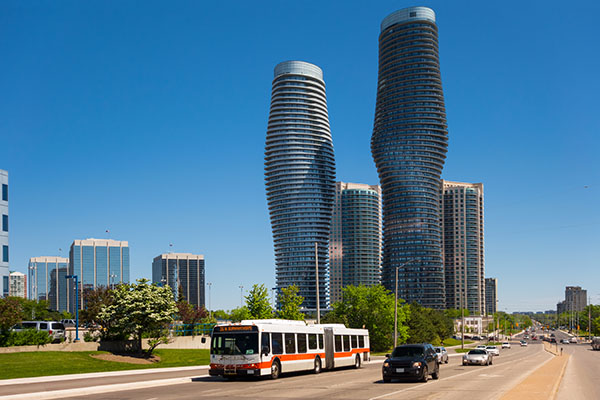
Market Profile:
One of the fastest-growing cities in Canada with a population of more than 795,000. Celebrating its 50th anniversary in 2024, Mississauga has become a major hub for innovation and economic development and a key economic centre in Canada, attracting international talent and global investment. The City of Mississauga’s 2023-2026 Strategic Business Plan focuses on investing in infrastructure, building and long-term economic growth. Mississauga offers low taxes, good quality services and has recently put in place an Action Plan for new housing initiatives over the next four years.
Some Facts:
- Mississauga’s 2023 Action Plan for New Housing outlines five goals and 23 actions the city will take over the next four years to build new housing.
- Mississauga offers multiple resources specifically designed to help entrepreneurs, including tax incentives for small businesses, funds to help people start their own business, and grants for female entrepreneurs, among others.
- Home to more than 75 Fortune 500 Companies and 1,400+ multi-national firms
- Home to Canada’s largest airport and serviced by seven major highways

